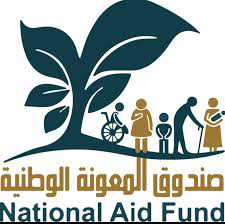You are here
WFP study identifies effects of food insecurity among NAF beneficiaries
By Rayya Al Muheisen - Apr 17,2023 - Last updated at Apr 17,2023

Petra file photo
AMMAN — Nearly 60 per cent of households receiving assistance from the National Aid Fund (NAF) are food insecure or vulnerable to food insecurity, according to the World Food Programme (WFP) Food Security Index.
A WFP study, conducted in cooperation with NAF, titled “Measuring food security outcomes for beneficiaries of the NAF” analysed data based on 3,000 interviews with 3,000 families benefiting from the fund’s Monthly Aid Programme and Unified Cash Transfer Programme, Al Mamlaka TV reported.
The study revealed that nearly 64 per cent of NAF’s beneficiary households do not consume fish or red meat, which is a “major reason for low consumption of iron-rich foods”. At a similarly high rate, 54 per cent of surveyed households were found to underconsume Vitamin A-rich foods due financial constraints.
“Seventy-three per cent of households manage their food shortages by making less desirable and cheaper food choices,” the study said.
The study also indicated that to cope with food insecurity or vulnerability, 59 per cent of households borrowed food from family or friends, while 33 per cent of households reduced meal sizes.
Additionally, 65 per cent of households bought food on credit, while 61 per cent of households had to borrow money to cover their food needs, according to the study.
Although the families surveyed received support from the National Aid Fund, the average per capita income in these households is JD66, which is considered less than the average expenditure, estimated at JD129, and falls below the Jordanian poverty line of JD68.
“Families benefiting from the fund spend 73 per cent of their income on expenses necessary for survival, such as rent, food and health,” the study added.
The average monthly income of families stands at JD300, including the assistance of the National Aid Fund, which is approximately JD66 per person.
“Forty-one per cent of households earn their income through one or more working members of the family, often engaged in informal industries such as construction, manufacturing, transportation, storage and agriculture,” the study said.
In 59 per cent of the households surveyed, there are no working family members due to “health conditions or physical disabilities”, whereas 13 per cent of households have one or more members looking for a job. Ten per cent cited the lack of available job opportunities as a reason for unemployment.
Nearly 90 per cent of the families targeted by the NAF “are unable to meet their basic needs for food and shelter without the support of the fund, leaving them in a state of extreme poverty”, according to the survey results.
The average NAF beneficiary family is composed of 5.1 members, and 48 per cent of beneficiary households are medium-sized families with between four to six members. Of the families surveyed, 27 per cent are large-sized families of seven or more members.
Related Articles
AMMAN — The United Nations World Food Programme (WFP) in Jordan is concerned about its funding situation with regard to providing support to
AMMAN — More than 50 per cent of households receiving assistance from the National Aid Fund (NAF) were paid less than JD50 a month in 2016,
AMMAN — A study by the National Aid Fund (NAF), which helps prevent families from falling into food poverty, found that its beneficiary fami













